Victorian Dr. Pepper (1885)
Victorian Dr. Pepper (1885)
.
![]()
.
Even though Dr Pepper (note the brand has no period after “Dr” since 1950) was eventually (year 1963) legally declared not a cola, it looks like cola and tastes like cola (to me).
.
A federal court ruled that Dr Pepper’s unique flavor kept it from being a “cola product,” which meant that bottlers were free to distribute Dr Pepper without running afoul of their exclusive deals with Coca-Cola and Pepsi. By the end of the decade, Dr Pepper was available from coast to coast.
.
~ Mental Floss: 11 Things You Might Not Know About Dr Pepper
.
![]()
.
Dr Pepper appeared FIRST!
.
Dr Pepper appeared at about the same time as Coca-Cola and Pepsi-Cola. In fact, Dr Pepper claims to be first.
.
The Dr Pepper Snapple Group is the oldest major manufacturer of soft drink concentrates and syrups in the United States. Dr Pepper is America’s unique flavor and was created, manufactured and sold beginning in 1885 in the Central Texas town of Waco. ~ Dr Pepper Museum
.
![]()
.
The U.S. Patent Office recognizes December 1, 1885, as the first time Dr Pepper was served. It was introduced nationally in the United States at the 1904 Louisiana Purchase Exposition as a new kind of soda pop, made with 23 flavors. Its introduction in 1885 preceded the introduction of Coca-Cola by one year. (emphasis added)~ Wikipedia: Dr Pepper
.
![]()
.
Morrison’s Old Corner Drug Store
.
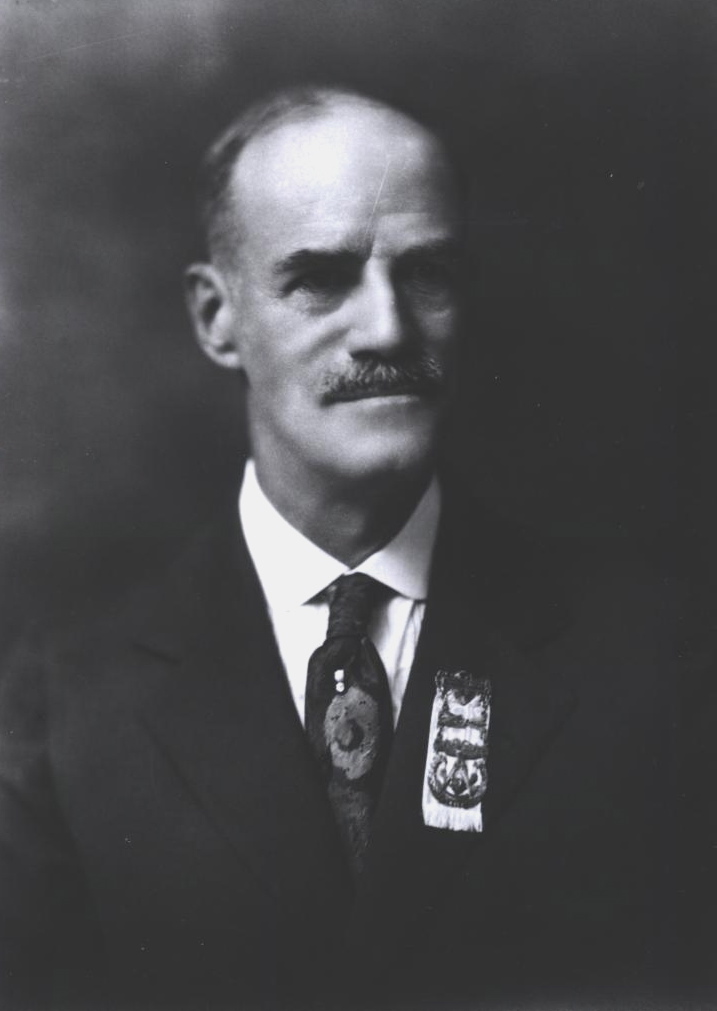
Charles Alderton, pharmacist, credited with inventing Dr. Pepper. Image: Courtesy of Dr Pepper Museum.
.
Charles Alderton, a young pharmacist working at Morrison’s store, is believed to be the inventor of the now famous drink. Alderton spent most of his time mixing up medicine for the people of Waco, but in his spare time he liked to serve carbonated drinks at the soda fountain. He liked the way the drug store smelled, with all of the fruit syrup flavor smells mixing together in the air. aHe decided to create a drink that tasted like that smell. He kept a journal, and after numerous experiments he finally hit upon a mixture of fruit syrups that he liked.
.
.
![]()
.
BUT WAIT:
.
Alderton’s handwritten recipe is titled “Dr. Pepper’s Pepsin Bitters“, but the advertisements state “Dr. Pepper’s Phos-Ferrates“.
.
In 2009, an old ledger book filled with formulas and recipes was discovered by Bill Waters while shopping at antiques stores in the Texas Panhandle. Several sheets and letterheads hinted it had come from the W.B. Morrison & Co. Old Corner Drug Store (the same store where Dr Pepper was first served in 1885) and faded letters on the book’s cover spelled out “Castles Formulas”. John Castles was a partner of Morrison’s for a time and worked at that location as early as 1880. One recipe in the book titled “D Peppers Pepsin Bitters” was of particular interest, and some speculated it could be an early recipe for Dr Pepper. However, Dr Pepper Snapple Group insists it is not the formula for Dr Pepper, but is instead a medicinal recipe for a digestive aid. The book was put up for auction in May 2009, but no one purchased it. (emphasis added)
.
.
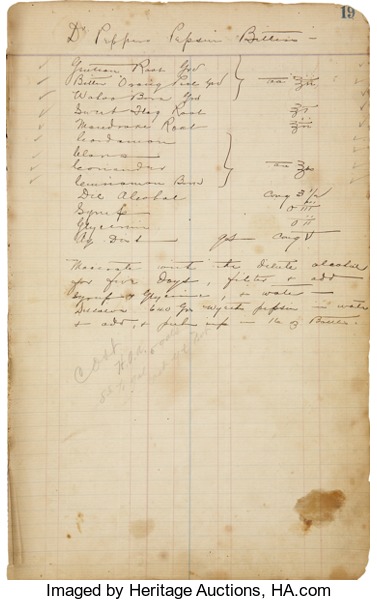
Dr Pepper: The Original “Dr Pepper Pepsin Bitters” Formula Handwritten in the Ledger Book from the Waco Drug Store in which it was invented. The book is listed as LOT #48092 by Heritage Capital Corporation, The World’s Largest Collectibles Auctioneer.
.
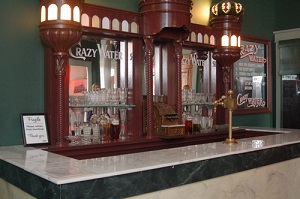
Replica of the soda fountain in Morrison’s Old Corner Drug Store, on display at the Dr Pepper Museum in Waco, TX. Image courtesy of Dr Pepper Snapple Group.
.
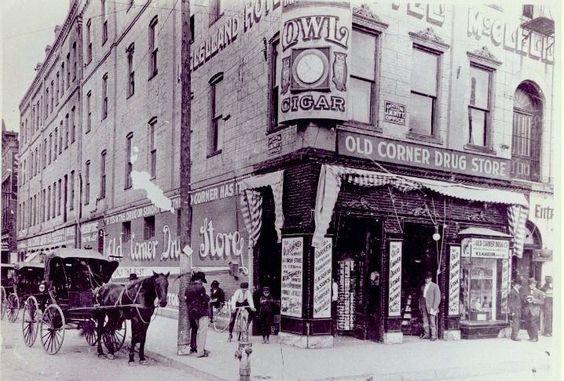
Morrison’s Old Corner Drug Store. Courtesy of Pinterest. Pinned from Dr Pepper Museum.
.
According to Anne Cooper Funderburg in Sundae Best: A History of Soda Fountains (page 69), “Morrison” was properly known as Wade B. Morrison. In 1882, Wade was brought in as a partner to sole owner of the Old Corner Drug Store, John W. Castles (who originally opened the store in 1880), but soon bought Castles out and became the sole proprietor himself.
Morrison employed Charles C. Alderton, the young pharmacist, “unusually cosmopolitan for Waco”, wrote Anne Cooper Funderburg (pp 69-70), “Born in New York, he had attended college in England and had earned a medical degree at the University of Texas. Since mixing potions was a major part of his work, it’s not surprising that he began to experiment with various ingredients and flavorings. His efforts paid off when he concocted an unusual blend that the locals loved. Since he had no name for it, the fountain regulars would order a Waco or simply say, “Shoot a Waco.””
.
![]()
.
Dr Pepper: 19th Century Advertising
.
- No Caffeine
- No Cocaine
- “Defends your children against an army of caffeine-doped beverages, as the great Horatius defended Rome”
- Brain Food and Exhilarant– Drink it when a cool head is needed, or important business to transact
- Nonalcoholic
- “Contains nothing detrimental or injurious to the most delicate system”
.
.
.
While Coca-Cola and Pepsi-Cola each sold for five cents per glass at this time, Dr. Pepper’s Phos-Ferrates sold for two glasses for five cents.
.
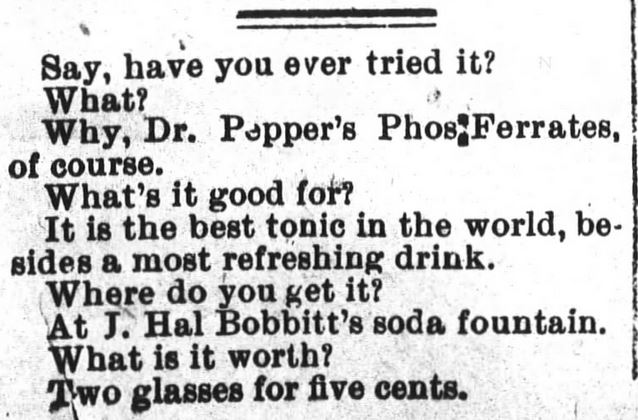
The Evening Visitor of Raleigh, North Carolina, on October 9, 1890.
.
The following advertisement (below) is good for a chuckle. “Brush the cob-webs out of your brains! And regulate your digestion by drinking Dr. Pepper’s Phos-Ferrates! Equal to the finest champagne. Nothing so palatable and Refreshing ever before offered to the American People.” The (above) 1890 advertisement called Dr. Pepper’s Phos-Ferrates “the best tonic, besides a most refreshing drink”, and (to repeat) essentially promises stimulant-like wakefulness and “regulate your digestion”. Interesting promises.
.
What exactly is a tonic?
.
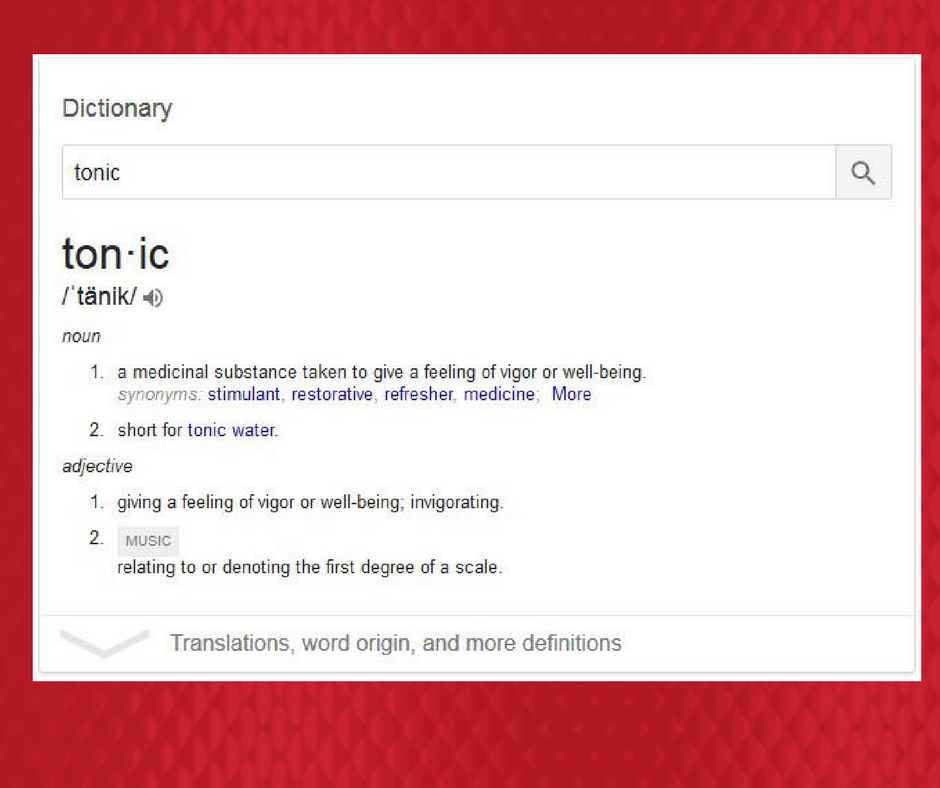
Definition of Tonic. Courtesy of Google.
.
Both noun definitions (1 and 2) and the applicable adjective definition (1) apply. I suppose Dr. Pepper could have meant that its beverage, a tonic, meant simply short for tonic water… but given the cob-web mentions and claims of regulating digestion, historians statements of Dr Pepper’s product placement as a medicine is supported by the Noun (1) definition of tonic: “a medicinal substance taken to give a feeling of vigor or well-being. synonyms: stimulant, restorative, refresher, medicine.”
.
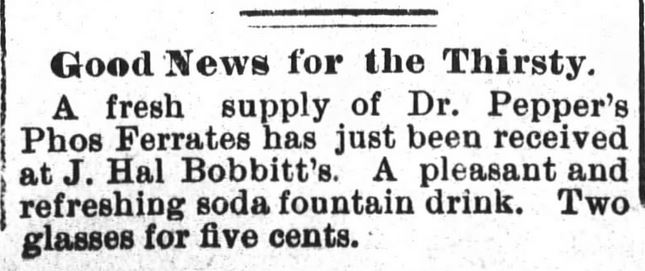
The Evening Visitor of Raleigh, North Carolina, on October 9, 1890.
.
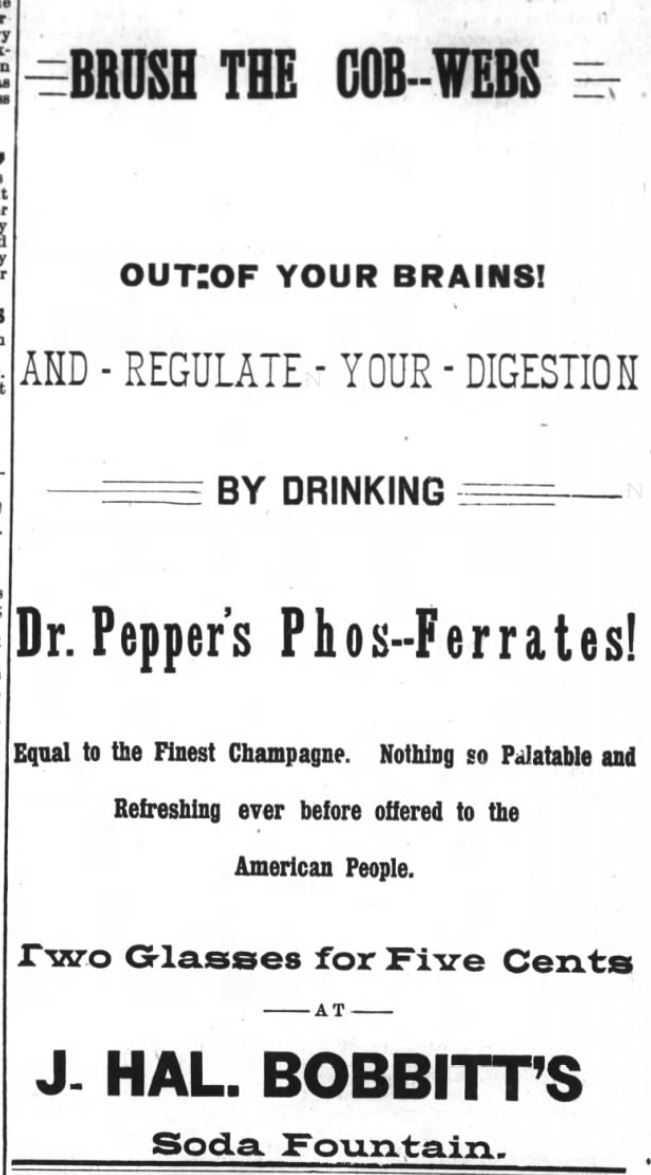
The Evening Visitor of Raleigh, North Carolina, on July 30, 1890.
.
![Kristin Holt | Victorian Dr. Pepper (1885). Lillie's & Co. fountain advertises Dr. Pepper, two glasses for a nickle [sic]. Published in The Guthrie Daily Leader of Guthrie, Oklahoma, June 14, 1895. Kristin Holt | Victorian Dr. Pepper (1885). Lillie's & Co. fountain advertises Dr. Pepper, two glasses for a nickle [sic]. Published in The Guthrie Daily Leader of Guthrie, Oklahoma, June 14, 1895.](https://www.kristinholt.com/wp-content/uploads/2017/08/Dr.-Peppers-Fosferrates-at-soda-fountain.-The-guthrie-Daily-Leader-of-guthrie-OK-on-14-June-1895.jpg)
The Guthrie Daily Leader of Guthrie, Oklahoma, on June 14, 1895.
.
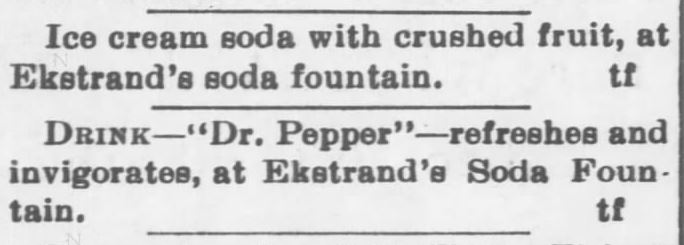
Salina Daily Republican-Journal of Salina, Kansas, on June 18, 1897. Delicious! Ice cream sodas!
.
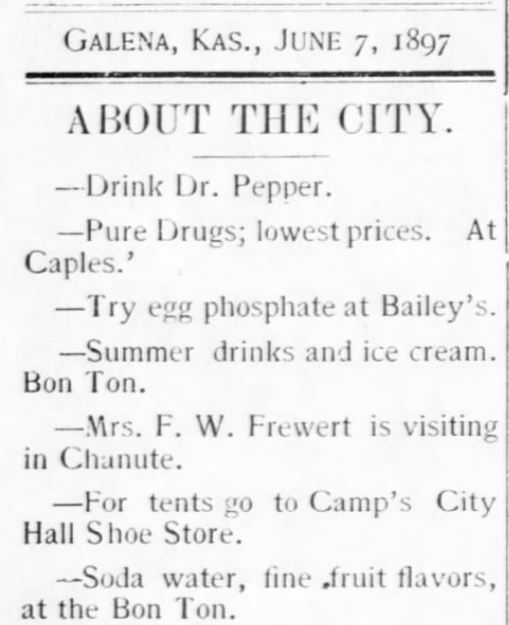
Dr Pepper is advertised among other soda fountain beverages (and unrelated advertisements). The Galena Evening Times of Galena, Kansas on June 7, 1897.
.

The Galena Evening Times of Galena, Kansas, on June 7, 1897.
.

The Wichita Daily Eagle of Wichita, Kansas on June 19, 1897.
.
But why is (1890) Dr Pepper so popular?
.
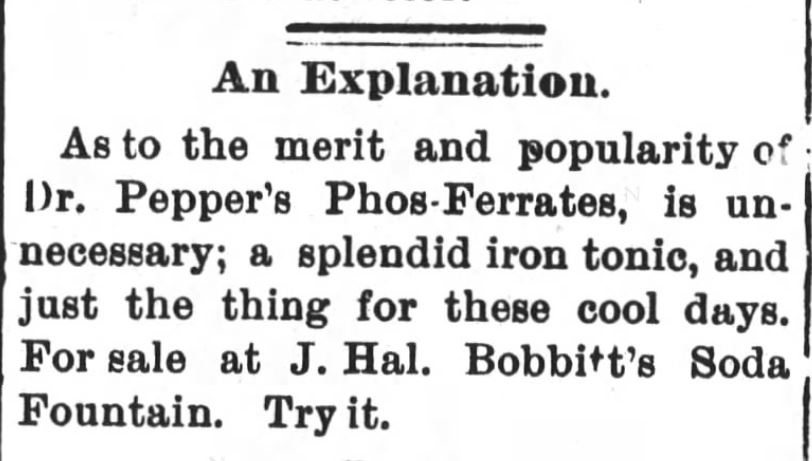
The Evening Visitor of Raleigh, North Carolina on October 28, 1890.
.
![]()
.
WHAT IS A PHOS-FERRATE? (also Phosferrate or Phos Ferrate)
.
Lillie & Co. have secured the exclusive agency of Dr. Peppers Phosferrate [sic], the most healthful of summer drinks. It contains phosphorus and iron, two of our best known tonics and is so combined with pleasant aromatics as to make it the most delightful beverage in existence. Remember it is served only at Lillie & Co.’s fountain. If you want a delicious drink and one that will tone up your system and make you strong try Dr. peppers Phosferrates. [sic] (emphasis added)
.
~ The Guthrie Daily Leader of Guthrie, Oklahoma, on July 21, 1895.
.
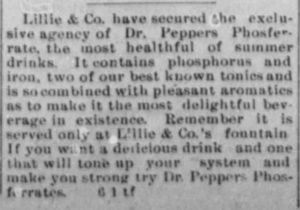
Difficult-to-read scanned image of the 1895 newspaper advertisement, transcribed precisely as printed, directly above. [This image not intended to be large enough to be readable.]
.
There you have it. Phos-Ferrates meant (according to 1895 article, above) that the delicious, healthful drink contained phosphorous and iron.
.
Dr Pepper’s Logo Helps Answer the Question
.
The original Dr. Pepper’s Phos-Ferrates logo, used wheat fronds and an iron anvil–as signs of healthful benefits.
.
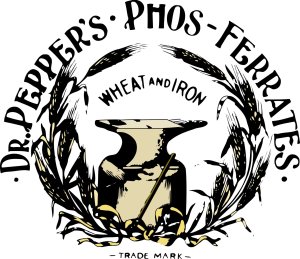
Early Dr. Pepper Logo, created by Nellie Eastland Kellner, a Waco artist. Wheat fronds and an iron anvil symbolize health benefits. Image: Courtesy of Dr Pepper Museum; Creating the first Dr Pepper Logo.
.
Wheat, maize, and rice are natural sources of the following minerals: calcium, phosphorus, zinc, iron, and copper. They are also natural sources of the following B vitamins: folate (B9), thiamin (B1), riboflavin (B2), niacin (B3), pyridoxine (B6), and biotin (B7).
.
.
So, yes, wheat contains phosphorous and iron. Current science allows for a wide variance, dependent upon mineral content in the soil and is improved by use of phosphate fertilizer. Today’s cereal and wheat products are fortified with a variety of vitamins and minerals, including phosphorous (and iron).
.
Phosphorus is a key Nutrient for plant growth and development…. Phosphorus (P) is an essential macro nutrient. It is vital to plant growth and is found in every living plant cell.
.
.
But… Dr Pepper contained no wheat. Instead, Dr Pepper contained phosphorous and iron… a nineteenth century claim to “healthful” and “nutritious”, thus supporting its early 20th century claim to “King of Beverages.”
.
![]()
.
Victorian Dr Pepper Slogans 1885
.
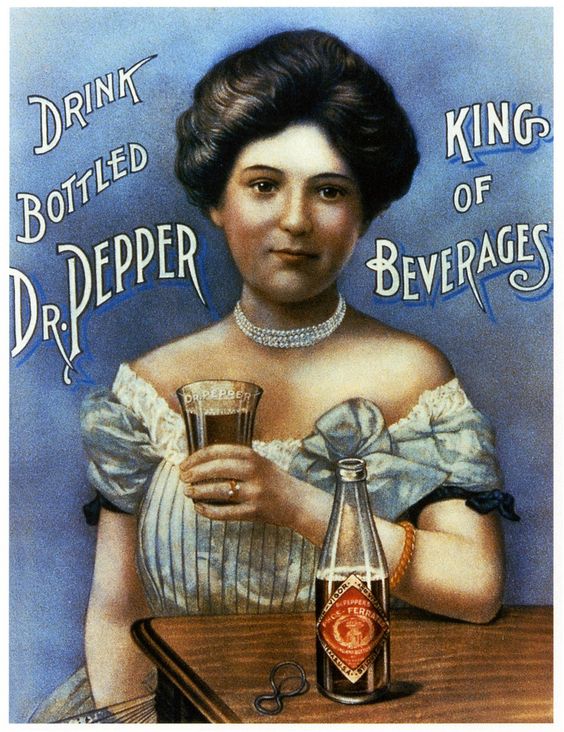
“Drink Bottled Dr. Pepper; King of Beverages” Image: Courtesy of Pinterest.
.
1889-1914 “King of Beverages”
.
but…
.
From 1910 to 1914, Dr Pepper was identified with the slogan, “King of Beverages.”
.
Despite the disagreement about when the slogan was first applied to Dr Pepper, this soda fountain beverage wasn’t alone in using the slogan “King of Beverages.” Batavia Coffee, advertised in Lead, South Dakota’s Lead Daily Call with the same slogan.
.
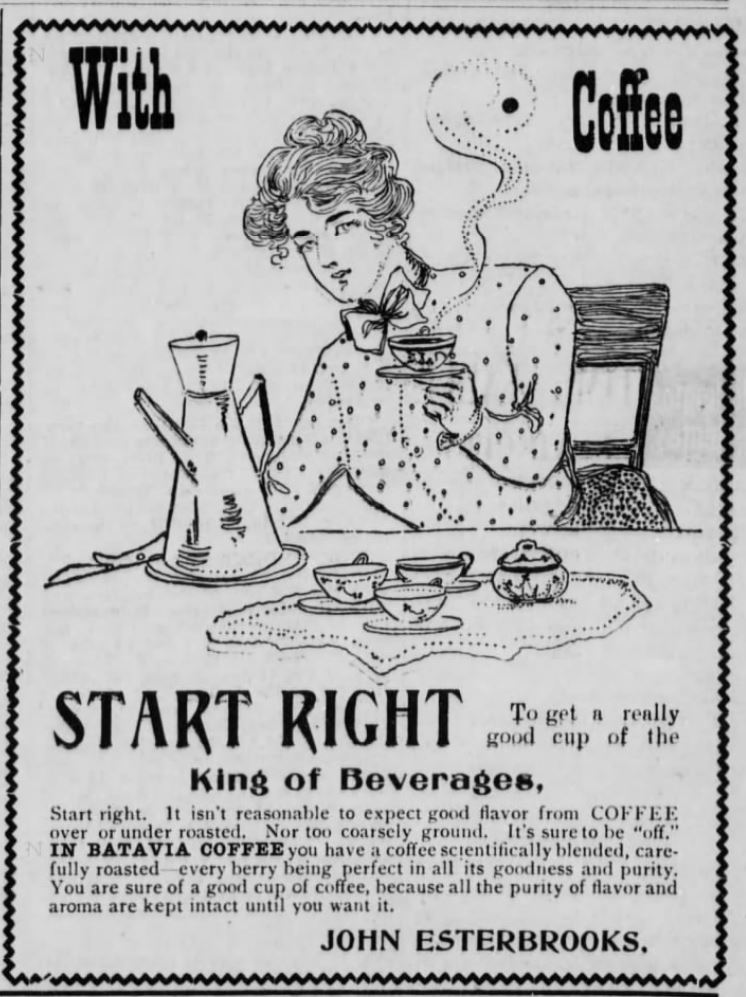
Batvia Coffee is “King of Beverages.” Advertised in Lead Daily Call of Lead, South Dakota. October 25, 1901 (p 4).
.
The Lebanon Brewery also pronounced a foaming beverage the “king of beverages.” See highlighted section of announcement, in following article.
.
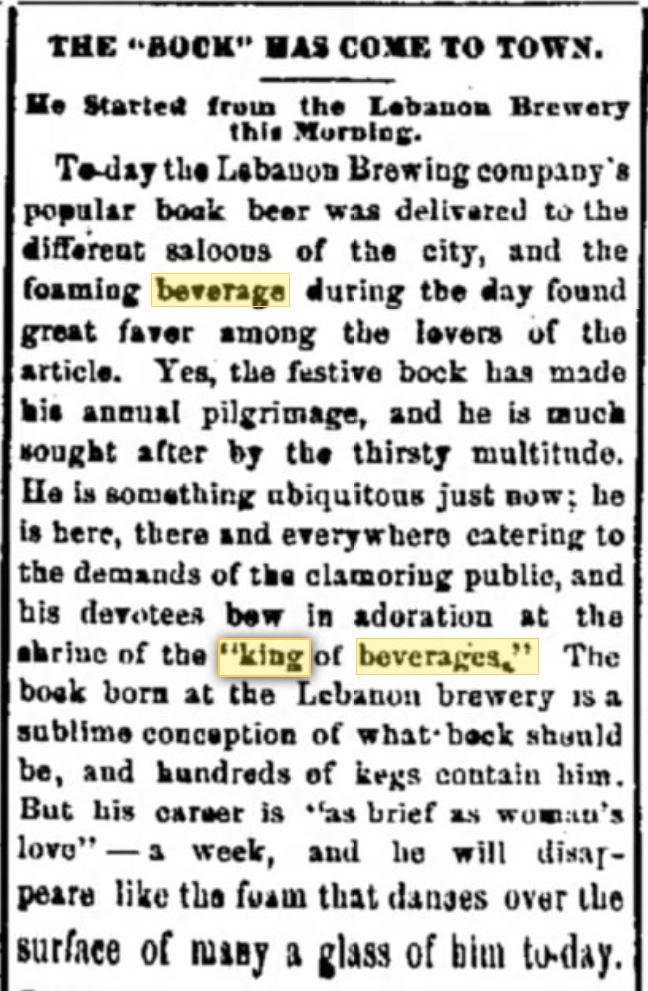
Lebanon Brewery pronounces a foaming offering the “king of beverages.” Published in Lebanon Daily News of Lebanon, Pennsylvania. April 20, 1889.
.
![]()
.
LOOKING BACK at Dr. Pepper…and chuckling
.
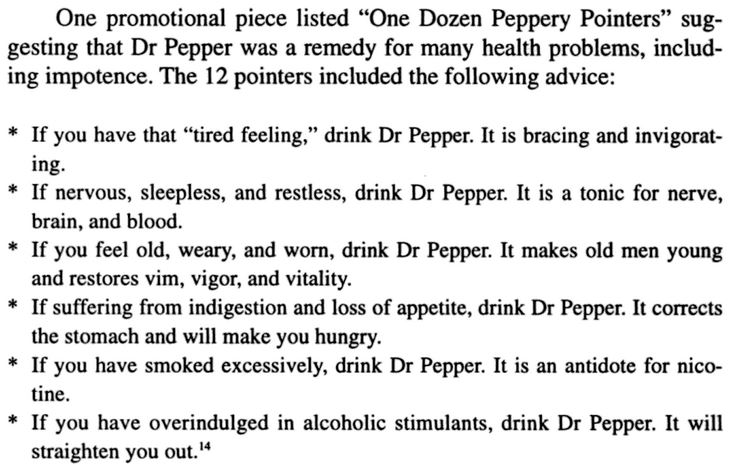
Sundae Best: A History of Soda Fountains by Anne Cooper Funderberg, page 72. A promotional piece listed “One Dozen Peppery Pointers.” The six starred claims included straightening out overindulgence in alcoholic beverages. Also an antidote for nicotine (smoking excessively). And restoring vim, vigor, and vitality. Image/Quotation courtesy of Google.
.
![]()
.
Related Articles
.
.
![]()
.
Updated February 2022
Copyright © 2017 Kristin Holt LC
Victorian Dr Pepper (1885) Victorian Dr Pepper (1885) Victorian Dr Pepper (1885) Victorian Dr Pepper (1885) Victorian Dr Pepper (1885) Victorian Dr Pepper (1885)



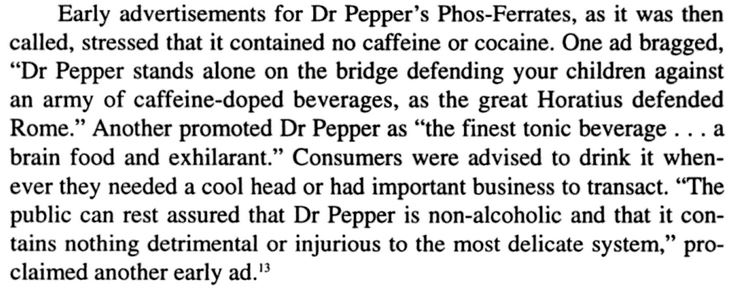

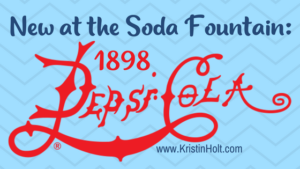




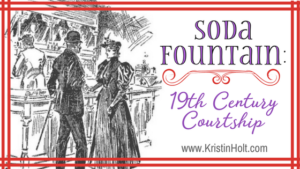












Can you guide me to a copy of the 1885 patent that says that Dr. Pepper is granted a patent/trademark? Or, any copy prior to 1948? Thanks
Hi Skipper–
Interesting question! I came across contemporary Dr Pepper trademark info online, but it all seems to refer back to “est. 1885.”
See: https://trademark.trademarkia.com/dr-pepper-est-1885-85399851.html
and
https://trademarks.justia.com/715/61/dr-pepper-71561734.html
I wish I knew more and could be of more help.
Warm regards,
Kristin
NARA Kansas City would have the paperwork, but they say it was destroyed years ago and that there probably was never such a patent/trademark. I do see in 1948 one was taken out, using the 1885 phrase.
Can you find the 1890 NC ad? is the date right? The company was not formed until 1892. Thanks. Skipper
Hi Skipper–
You asked: “Can you find the 1890 NC ad? is the date right?”
I may need a little more information… I have included a few advertisements/newspaper postings from 1890–each from The Evening Visitor of Raleigh, North Carolina. I do believe the dates are correct. Will you clarify, perhaps tell me a little more? I’d like to be of help if I can.
Best,
Kristin
I nor the patent office can find an 1885 registration…have you seen an document on that?
Hi Skipper!
I see you’ve been searching for this 1885 patent for some time (see our previous conversations here). How I wish I knew what had become of that 1885 paperwork… only that modern curated sources say it used to exist. From your comment earlier, I believe the paperwork was destroyed by fire. Happy searching!
Kristin